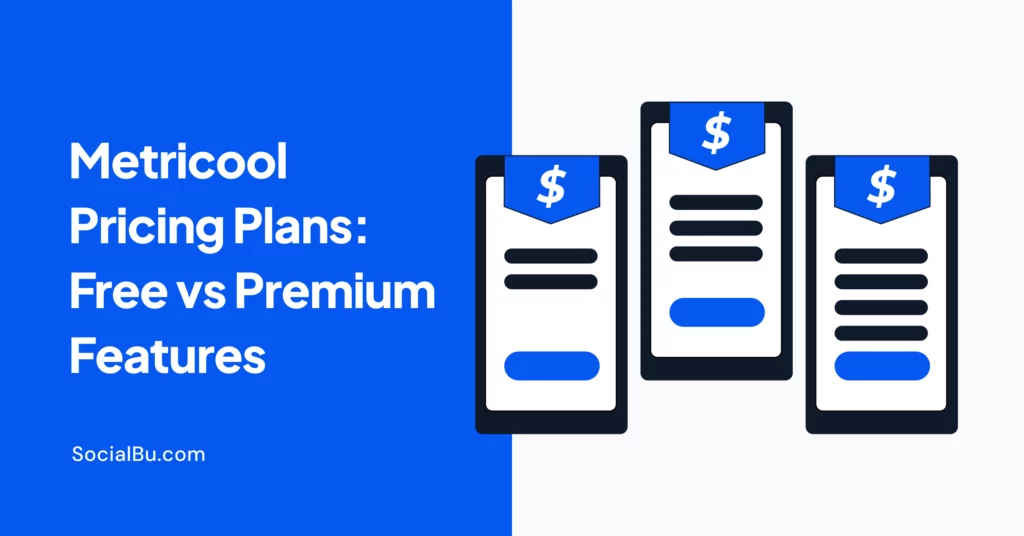In the digital era, video marketing has emerged as a powerful tool for businesses to connect with their audience. This form of marketing allows brands to communicate their story, explain their value proposition, and build relationships with customers in an engaging and visually compelling way.
This article will guide you through the process of creating engaging video content for various social media platforms.
What Is Good Video Content?

Video content is a powerful tool in digital marketing, offering a dynamic and engaging way to communicate with audiences. It’s critical to understand that the success of such content largely depends on its script, which dictates the video’s narrative, message, and overall flow.
This is where essay writing services like KingEssays come into play. These services are staffed by professional writers who can craft compelling scripts that capture viewers’ attention, convey your message effectively, and evoke the desired response. They understand the nuances of storytelling, pacing, and language, ensuring your video content is not only informative but also entertaining.
By leveraging essay writing services for scriptwriting, you can elevate your video content and make a greater impact on your audience.
Understanding Different Social Media Platforms
As we delve into the world of video marketing, it’s essential to understand the playing field – the various social media platforms. Each platform has its unique characteristics, audience demographics, and content preferences, which can greatly influence the success of your video content.
Facebook is one of the most versatile platforms when it comes to content, supporting text, images, videos, live videos, and stories. It has a vast user base spanning various age groups, but it’s particularly popular among adults. The platform encourages community building and engagement, making it an excellent place for brands to connect with their audience.
Owned by Facebook, Instagram is a highly visual platform that’s popular with younger demographics, particularly those under 30. It supports photo and video posts, stories, and recently, short-form videos with its new feature, Reels. Instagram is perfect for brands that can produce high-quality, visually appealing content.
YouTube
YouTube is the second-largest search engine in the world, making it a must for any brand using video marketing. It’s a platform dedicated solely to video content and has a broad user base. YouTube is ideal for longer, informative videos like tutorials, interviews, or product reviews.
TikTok
TikTok has seen explosive growth and is hugely popular with Gen Z and younger millennials. It’s a platform for short, fun, and creative videos. The use of trending songs and hashtags can lead to viral content.
Tailoring Your Content
Understanding the differences in audience demographics and content preferences across these platforms is crucial in creating effective video content.
For instance, a detailed tutorial video might perform well on YouTube, while a quick how-to video could gain traction on TikTok. Similarly, behind-the-scenes content might garner more engagement on Instagram, while a product announcement could reach more people on Facebook.
Planning Your Video Content

In the realm of social media marketing, video content reigns supreme. It has the power to engage audiences, boost brand visibility, and drive conversions. However, creating video content is not just about shooting and editing; it involves strategic planning.
Identifying Your Target Audience
Your target audience is the backbone of your video content strategy. Knowing who they are, what they like, what they need, and how they behave online is crucial. This knowledge will guide you in creating content that resonates with them, grabs their attention, and prompts them to act.
Take time to research and understand your audience. Consider factors like age, location, interests, challenges, and which social media platforms they use most. The more specific you can be, the better you can tailor your content to appeal to them.
Setting Clear and Measurable Goals
Having clear and measurable goals is an essential part of any successful social media strategy. What do you want to achieve with your video content? Are you looking to increase brand awareness, generate leads, drive website traffic, or boost product sales?
Once you’ve defined your objectives, set key performance indicators (KPIs) to measure your progress toward these goals. For instance, if your goal is to increase brand awareness, you might track metrics like video views, shares, and likes.
Creating a Content Calendar
A content calendar is a visual workflow that schedules your content production and publication. It helps you organize your posts across different platforms, keep track of what you’re sharing, when, and where, and ensure that your content is varied and balanced.
When creating a content calendar for your video content, consider the best times to post on each platform to maximize engagement. Also, plan for a mix of content types – educational videos, behind-the-scenes looks, user-generated content, etc., to keep your audience interested.
Creating Engaging Video Content
Creating video content requires a blend of creativity, an understanding of audience preferences, and strategic use of platform-specific features.
However, for those seeking to build a dedicated audience and generate revenue, creating a video streaming website is a strategic move.
Here are some tips and strategies to help you create compelling video content for social media platforms.
Tips for Creating Compelling Video Content
Creating compelling video content often begins with having a clear purpose. Each piece of content you produce should be designed to serve a specific goal, whether it’s to educate, entertain, inspire, or persuade. Here are some key tips for creating compelling video content:
- Tell a Story: Storytelling is a powerful tool in video marketing. It helps to engage viewers on an emotional level and makes your content more memorable.
- Keep It Short and Sweet: Internet users typically have short attention spans. Keep your videos concise and to the point, while ensuring they deliver value. Utilizing a video editor tool can greatly aid in converting text to video quickly, trimming excess footage and focusing on key content, making your videos more engaging and effective.
- Use Humor: Funny videos can be highly engaging. Don’t be afraid to show your brand’s lighter side.
- Experiment: Try different formats, styles, and content types to see what resonates most with your audience.
- Strong Call-To-Action: Every video should guide viewers towards a desired action, like visiting your website, sharing the video, or making a purchase. By using an online video editor, you can refine your videos and ensure that they effectively communicate your message and desired action to your audience.
Importance of Storytelling in Video Marketing
Storytelling in video marketing is not just about narrating a story; it’s about connecting with your audience emotionally and making your brand more relatable. A well-told story can captivate viewers, hold their attention, and make your message more memorable.
Utilizing Features Unique to Each Platform
Each social media platform offers unique features that can enhance your video content. For instance, Instagram Reels allows you to create short, 15-second videos that can be highly shareable. On the other hand, YouTube Premieres lets you schedule a video upload and create a shareable watch page, allowing you to build anticipation among your audience.
Tips: If you’re on a budget, you can explore options like a cheap YouTube Premium subscription to enhance your audience’s viewing experience further, making your content more accessible and engaging
Optimizing Videos for Each Platform

Creating video content for social media platforms is not just about the content itself, but also how well it’s optimized for each platform. From format and resolution to captions and scheduling, every detail can influence your video’s performance.
Best Practices for Video Length, Format, and Resolution
The ideal length, format, and resolution of your videos can vary significantly across different platforms. Here are some general recommendations:
- Facebook: Facebook supports videos up to 240 minutes long, but videos under two minutes often perform better. The recommended video formats are .MP4 and .MOV1.
- Instagram: Instagram feed videos can be up to 60 seconds long, while IGTV allows longer content. The best video formats are MP4, MOV, or GIF.
- YouTube: YouTube is ideal for longer videos, and it supports various video formats, with a minimum resolution of 1280 by 720 pixels.
- TikTok: TikTok specializes in short, engaging videos, with a maximum length of 60 seconds. The most recommended aspect ratios are 9:16 and 1:1.
Remember, these are general guidelines, and it’s essential to experiment and see what works best for your audience.
Using Captions and Hashtags Effectively
Captions and hashtags can significantly enhance your video content’s visibility and engagement.
- Captions: Adding captions to your videos makes them accessible to a broader audience, including those who watch videos with the sound off. They also improve your video’s SEO rankings.
- Hashtags: Hashtags can help increase your content’s discoverability. Use relevant, trending hashtags to reach a wider audience. But remember, overuse of hashtags can look spammy and should be avoided.
Scheduling Posts for Maximum Engagement
Timing is crucial on social media. Posting your videos when your audience is most active can lead to higher engagement. Each platform has different peak times, so it’s important to research and experiment to find the best times for your specific audience
Promoting Your Video Content
With the right promotional strategies, you can ensure your videos reach a wider audience and achieve your marketing goals. Here’s how you can promote your video content effectively on social media platforms.
Organic Promotion vs. Paid Advertising
There are two main ways to promote your video content: organic promotion and paid advertising.
Organic Promotion: This involves sharing your videos on your social media profiles, encouraging your followers to share your content, and using SEO strategies to increase your content’s visibility. Organic promotion can help you build a loyal audience over time.
Paid Advertising: Paid ads allow you to reach a larger or more targeted audience. Most social media platforms offer paid advertising options that can boost your video’s reach and engagement.
Both methods have their benefits, and using a combination of both can often yield the best results.
Leveraging Influencers and Collaborations
Influencer marketing and collaborations can be highly effective in promoting your video content. Influencers have a dedicated following and can introduce your brand to a new audience. Collaborating with influencers or other brands on video content can boost your reach, credibility, and engagement.
Encouraging User-Generated Content
User-generated content (UGC) is any content—text, videos, images, reviews, etc.—created by people, rather than brands. Encouraging your audience to create and share videos about your brand can be a powerful promotional strategy. UGC not only increases your content’s reach but also builds trust as it’s perceived as more authentic and unbiased
Measuring Success and Improving Your Strategy

It’s not just about launching a campaign and hoping for the best; it’s about measuring your performance, interpreting the results, and continually refining your strategy. Here’s how you can measure success and improve your strategy when creating video content for social media platforms.
Tracking Key Performance Indicators (KPIs)
Key Performance Indicators (KPIs) are metrics that help you understand how well your video content is performing against your set objectives. These could be views, likes, shares, comments, watch time, click-through rates, conversions, or any other metric that aligns with your goals. Regularly tracking these KPIs can provide valuable insights into your campaign’s effectiveness.
Interpreting Analytics Provided by Social Media Platforms
Most social media platforms provide comprehensive analytics that can give you in-depth insights into your video’s performance. These may include:
- Reach and Impressions: These metrics show how many people have seen your video and how many times it was displayed.
- Engagement: This includes likes, comments, shares, and saves. High engagement often indicates that your content resonates with your audience.
- Video Views and Watch Time: These metrics show how many people watched your video and for how long, indicating how engaging your video is.
- Click-Through Rate (CTR): CTR shows how many viewers clicked on your call-to-action or website link, which can indicate the effectiveness of your video in driving desired actions.
By interpreting these analytics correctly, you can understand what’s working, what’s not, and where there’s room for improvement.
Adjusting Your Strategy Based on Results and Feedback
Once you’ve tracked your KPIs and interpreted your analytics, the next step is to adjust your strategy based on these insights. If certain types of videos are performing better than others, consider creating more of that content. If your videos are not reaching enough people, you might need to adjust your promotional strategy or explore paid advertising. Always be open to feedback and willing to make changes to improve your results.
Conclusion
To conclude, video marketing is a dynamic and effective way to engage your audience and grow your brand on social media. By understanding your audience, planning your content, creating videos, and measuring your results, you can harness the power of video marketing to take your social media presence to new heights.







